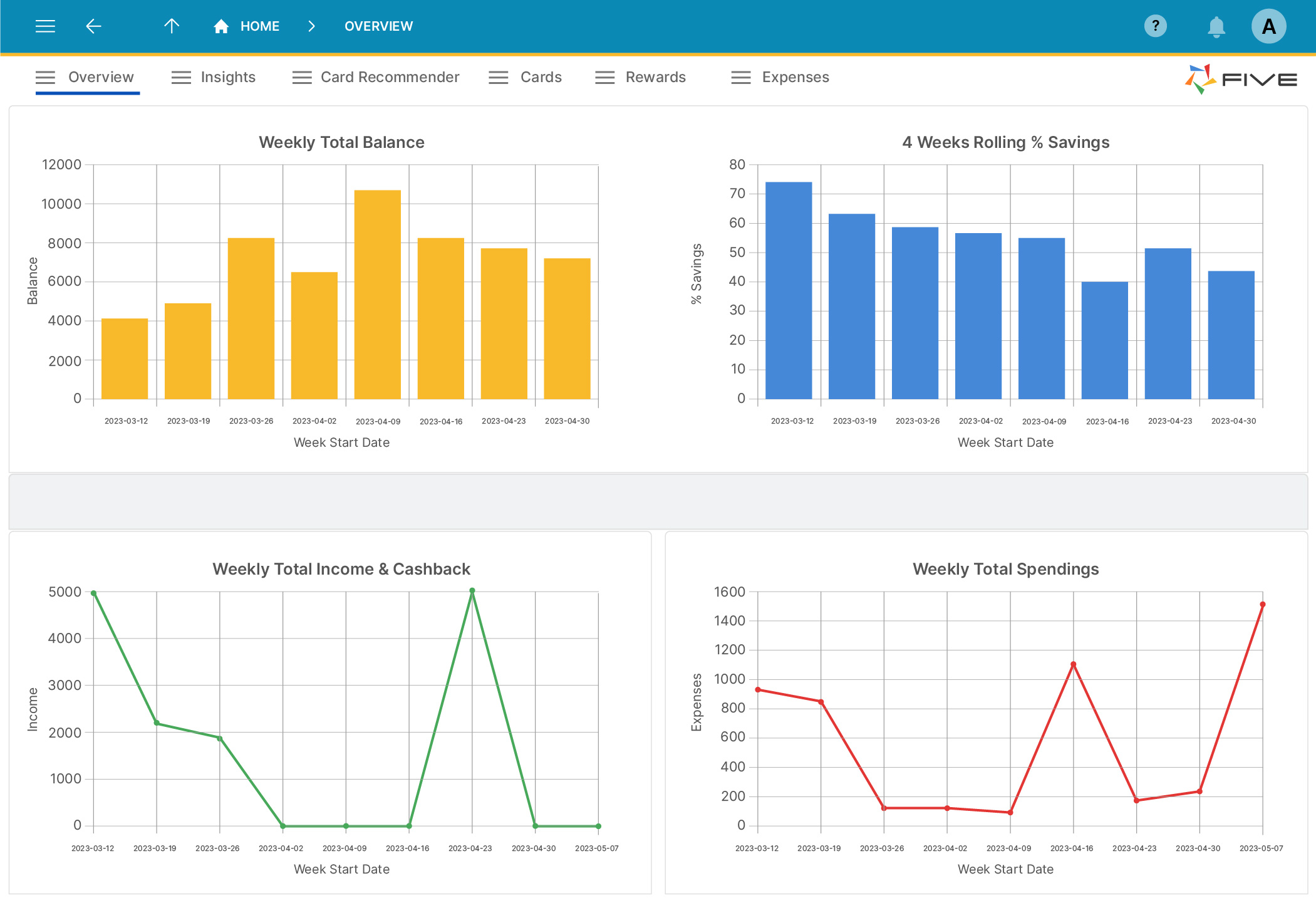Build a Custom Performance Dashboard Using Low Code
Making the right decisions at the right moment based on insights is essential to any business that wants to succeed. Without a clear vision or strategy, navigating your business can feel like shooting in the dark, which can be detrimental to its growth regardless of its size or sector.
To avoid this, many businesses have started to adopt various kinds of performance dashboards across different departments and job roles. This doesn’t just mean focusing on one area, but rather incorporating modern data analysis tools and utilizing a professional dashboard creator to enhance your data management processes across all aspects of your business. By doing so, you can grow your business, increase brand awareness, and ultimately boost your bottom line.
Why Use a Low-Code Tool for Building a Custom Performance Dashboard?
Low-code solutions accelerate software development with pre-built components and the option to add code for complex applications, making it an efficient coding approach.
Some people may reject the idea of a low-code tool. However, it is important to remember that software engineering is a constantly evolving field, with an ever-increasing amount of reused code. Which is similar to using libraries or frameworks such as React, Flask, or Ruby on Rails. Low-code platforms provide a higher level of abstraction, enabling developers to work at a higher level of complexity. Learn more about low-code in our ultimate guide.
Five is a low-code tool for building full-stack web applications such as all types of performance dashboards. It features a built-in MySQL database with the capability to add JavaScript, TypeScript & SQL codes to build unique business logic. Five also takes away the headache of deployment by doing it all with a single click.
Performance Dashboard Examples and Key Metrics To Track
Here are a few types of performance dashboards that you can build using Five:
Retail Store Performance Dashboard
A store performance dashboard is an essential tool for retailers who want to keep a close eye on their sales and revenue in real time. It provides a quick and easy way to visualize your store’s performance, identify slow and fast-moving products, and make data-driven decisions.
Here are some key metrics that should be included in a store performance dashboard:
- Sales Revenue
- Sales by Product Category
- Sales by Product
- Average Transaction Value (ATV)
- Conversion Rate
- Customer Retention Rate
- Inventory Levels
By tracking these key metrics, you can gain valuable insights into your store’s performance and make informed decisions to improve your sales and revenue. A store performance dashboard can help you visualize this data in real time, so you can quickly identify trends and take action to optimize your store’s performance.
Sales Performance Dashboard
A sales performance dashboard is a powerful tool for businesses to track their sales team performance and identify areas for improvement. It is one of the most valuable dashboards for any business to have as it provides a snapshot of your sales performance, which can help you make data-driven decisions to optimize your sales strategies.
Here are some key metrics that should be included in a sales performance dashboard:
- Sales Revenue
- Sales by Product
- Sales by Sales Rep
- Sales by Region
- Sales Pipeline
- Average Deal Size
- Sales Cycle Length
- Customer Lifetime Value (CLV)
By tracking these key metrics, you can gain valuable insights into your sales performance and make informed decisions to optimize your sales strategies. A sales performance dashboard can help you visualize this data, so you can quickly identify trends and take action to improve your sales performance.
Marketing Performance Dashboard
A marketing performance dashboard is a comprehensive tool that helps businesses track their marketing campaigns and assess their marketing channel effectiveness. It provides insights into various aspects of marketing, such as lead generation, website traffic, social media engagement, and email marketing. By tracking these metrics, businesses can make data-driven decisions to optimize their marketing strategies and improve their ROI.
Here are some key metrics that should be included in a marketing performance dashboard:
- Website Traffic
- Lead Generation
- Conversion Rates
- Social Media Engagement
- Email Marketing
- Cost per Acquisition (CPA)
- Return on Investment (ROI)
By tracking these key metrics, businesses can gain valuable insights into their marketing performance and make data-driven decisions to optimize their strategies and improve their ROI. A marketing performance dashboard can help visualize this data in real time, allowing businesses to quickly identify trends and take action to improve their marketing efforts.
Agent Performance Dashboard
An agent performance dashboard is a tool that helps businesses track the performance of their customer service agents. It provides insights into various aspects of customer service, such as response time, resolution rate, and customer satisfaction. By tracking these metrics, businesses can identify areas for improvement and optimize their customer service strategies to improve their overall customer experience.
Here are some of the metrics that can be included in an agent performance dashboard:
- Response Time
- Resolution Rate
- Customer Satisfaction
- First Contact Resolution
- Average Handling Time
By tracking these key metrics, businesses can gain valuable insights into their customer service performance and make data-driven decisions to optimize their strategies and improve their overall customer experience. An agent performance dashboard can help visualize this data in real time, allowing businesses to quickly identify trends and take action to improve their support process.
Campaign Performance Dashboard
A campaign performance dashboard is a powerful tool that helps businesses track the effectiveness of their marketing campaigns. It provides insights into various aspects of a campaign, including lead generation, conversion rates, engagement, and return on investment. By tracking these key metrics, businesses can make data-driven decisions to optimize their marketing strategies and improve their campaign performance.
Here are some key metrics that should be included in a campaign performance dashboard:
- Lead Generation
- Conversion Rates
- Engagement
- Cost per Click (CPC)
- Cost per Acquisition (CPA)
- Return on Investment (ROI)
By tracking these key metrics, businesses can gain valuable insights into their campaign performance and make informed decisions to optimize their strategies and improve their ROI. A campaign performance dashboard can help visualize this data in real time, allowing businesses to quickly identify trends and take action to improve their marketing efforts.
KPI Dashboard
A KPI (Key Performance Indicator) dashboard is a tool that helps businesses track their performance against set goals and objectives. It provides insights into various aspects of a business’s operations, such as sales, marketing, customer service, and finance. By tracking these key metrics, businesses can make data-driven decisions to optimize their strategies and improve their overall performance.
Here are some key metrics that should be included in a KPI performance dashboard:
- Sales Revenue
- Customer Acquisition Cost (CAC)
- Customer Lifetime Value (CLV)
- Net Promoter Score (NPS)
- Customer Churn Rate
- Marketing ROI
- Profit Margin
- Employee Retention Rate
By tracking these key metrics, businesses can gain valuable insights into their performance and make informed decisions to optimize their strategies and improve their bottom line. A KPI dashboard can help visualize this data in real time, allowing businesses to quickly identify trends and take action to improve their overall performance.
Business Performance Dashboard
A business performance dashboard is a tool that helps businesses track their overall performance. It provides insights into various aspects of a business’s operations, such as sales, marketing, customer service, finance, and operations. By tracking these key metrics, businesses can make data-driven decisions to optimize their strategies and improve their overall performance.
Here are some key metrics that should be included in a business performance dashboard:
- Sales Revenue
- Customer Acquisition Cost (CAC)
- Customer Lifetime Value (CLV)
- Net Promoter Score (NPS)
- Customer Churn Rate
- Marketing ROI
- Profit Margin
- Employee Retention Rate
- Inventory Turnover
- Accounts Receivable Turnover
- Accounts Payable Turnover
By tracking these key metrics, businesses can gain valuable insights into their performance and make informed decisions to optimize their strategies and improve their bottom line. A business performance dashboard can help visualize this data in real time, allowing businesses to quickly identify trends and take action to improve their overall performance.
Content Performance Dashboard
A content performance dashboard is a tool that helps businesses track the effectiveness of their content marketing efforts. It provides insights into various aspects of content, such as traffic, engagement, and conversions. By tracking these key metrics, businesses can make data-driven decisions to optimize their content marketing strategies and improve their overall performance.
Here are some key metrics that should be included in a content performance dashboard:
- Website Traffic
- Bounce Rate
- Time on Site
- Pageviews per Visit
- Conversion Rates
- Social Media Engagement
- Email Open Rates
- Click-Through Rates (CTR)
- Number of Leads Generated
By tracking these key metrics, businesses can gain valuable insights into their content marketing performance and make informed decisions to optimize their strategies and improve their overall performance. A content performance dashboard can help visualize this data in real time, allowing businesses to quickly identify trends and take action to improve their content marketing efforts.
Product Performance Dashboard
A product performance dashboard is a tool that helps businesses track the performance of their products. It provides insights into various aspects of a product, such as sales, inventory, and customer feedback. By tracking these key metrics, businesses can make data-driven decisions to optimize their product strategies and improve their overall performance.
Here are some key metrics that should be included in a product performance dashboard:
- Sales Revenue
- Units Sold
- Inventory Levels
- Customer Reviews
- Product Returns and Refunds
- Net Promoter Score (NPS)
- Customer Lifetime Value (CLV)
- Product Development Costs
By tracking these key metrics, businesses can gain valuable insights into their product performance and make informed decisions to optimize their strategies and improve their overall performance. A product performance dashboard can help visualize this data in real time, allowing businesses to quickly identify trends and take action to improve their product offerings.
Call Center Performance Dashboard
A call center performance dashboard is a tool that helps businesses track the performance of their call center operations. It provides insights into various aspects of call center operations, such as call volumes, wait times, and customer satisfaction. By tracking these key metrics, businesses can make data-driven decisions to optimize their call center strategies and improve their overall performance.
Here are some key metrics that should be included in a call center performance dashboard:
- Call Volume
- Average Wait Time
- Average Handle Time
- Call Abandonment Rate
- First Call Resolution Rate
- Customer Satisfaction (CSAT) Score
- Net Promoter Score (NPS)
By tracking these key metrics, businesses can gain valuable insights into their call center performance and make informed decisions to optimize their strategies and improve their overall performance. A call center performance dashboard can help visualize this data in real time, allowing businesses to quickly identify trends and take action to improve their call center operations.
Email Performance Dashboard
An email performance dashboard is a tool that helps businesses track the effectiveness of their email marketing campaigns. It provides insights into various aspects of email campaigns, such as open rates, click-through rates, and conversions. By tracking these key metrics, businesses can make data-driven decisions to optimize their email marketing strategies and improve their overall performance.
Here are some key metrics that should be included in an email performance dashboard:
- Email Open Rates
- Click-Through Rates (CTR)
- Conversion Rates
- Bounce Rates
- Unsubscribe Rates
- Number of Emails Sent
- Revenue Generated from Emails
- Email List Growth Rate
By tracking these key metrics, businesses can gain valuable insights into their email marketing performance and make informed decisions to optimize their strategies and improve their overall performance. An email performance dashboard can help visualize this data in real time, allowing businesses to quickly identify trends and take action to improve their email marketing efforts.
Employee Performance Dashboard
An employee performance dashboard is a tool that helps businesses track the performance of their employees. It provides insights into various aspects of employee performance, such as productivity, attendance, and satisfaction. By tracking these key metrics, businesses can make data-driven decisions to optimize their human resources strategies and improve their overall performance.
Here are some key metrics that should be included in an employee performance dashboard:
- Productivity Metrics
- Attendance Metrics
- Employee Satisfaction Metrics
- Training and Development Metrics
- Employee Turnover Rate
- Time-to-Hire
- Cost-per-Hire
- Revenue-per-Employee
By tracking these key metrics, businesses can gain valuable insights into their employee performance and make informed decisions to optimize their human resources strategies and improve their overall performance. An employee performance dashboard can help visualize this data in real time, allowing businesses to quickly identify trends and take action to improve their employee performance.
Project Performance Dashboard
A project performance dashboard is a tool that helps businesses track the performance of their projects. It provides insights into various aspects of a project, such as progress, budget, and resource allocation. By tracking these key metrics, businesses can make data-driven decisions to optimize their project management strategies and improve their overall performance.
Here are some key metrics that should be included in a project performance dashboard:
- Project Progress
- Budget Metrics
- Resource Allocation Metrics
- Risk Metrics
- Project Timeline
- Stakeholder Satisfaction
- Team Performance Metrics
By tracking these key metrics, businesses can gain valuable insights into their project performance and make informed decisions to optimize their project management strategies and improve their overall performance. A project performance dashboard can help visualize this data in real time, allowing businesses to quickly identify trends and take action to improve their project performance.
Conclusion
A performance dashboard is not very useful without data. On their own, they are just a collection of well-designed charts and pictures. But, when you add some facts and figures, they become a powerful tool for storytelling. Five gives you an easier way to turn your raw data into an appealing and data-driven visual aid that helps you understand how well you are performing.

We have explored various use cases of performance dashboards, and now it’s time to take the next step and start building them. Sign up for a free download of Five and begin creating your custom performance dashboard. Check out other use cases you can build using Five here.


